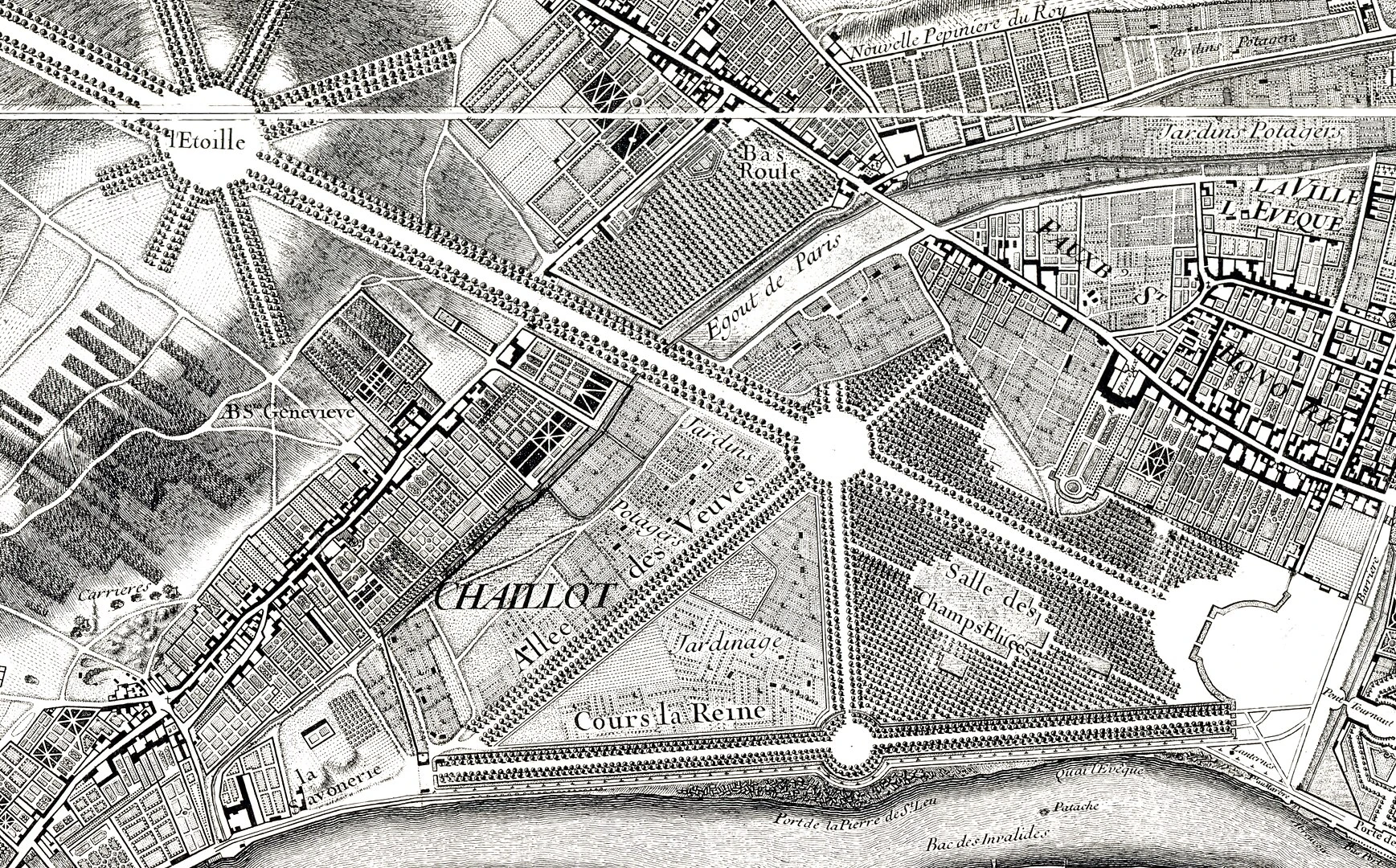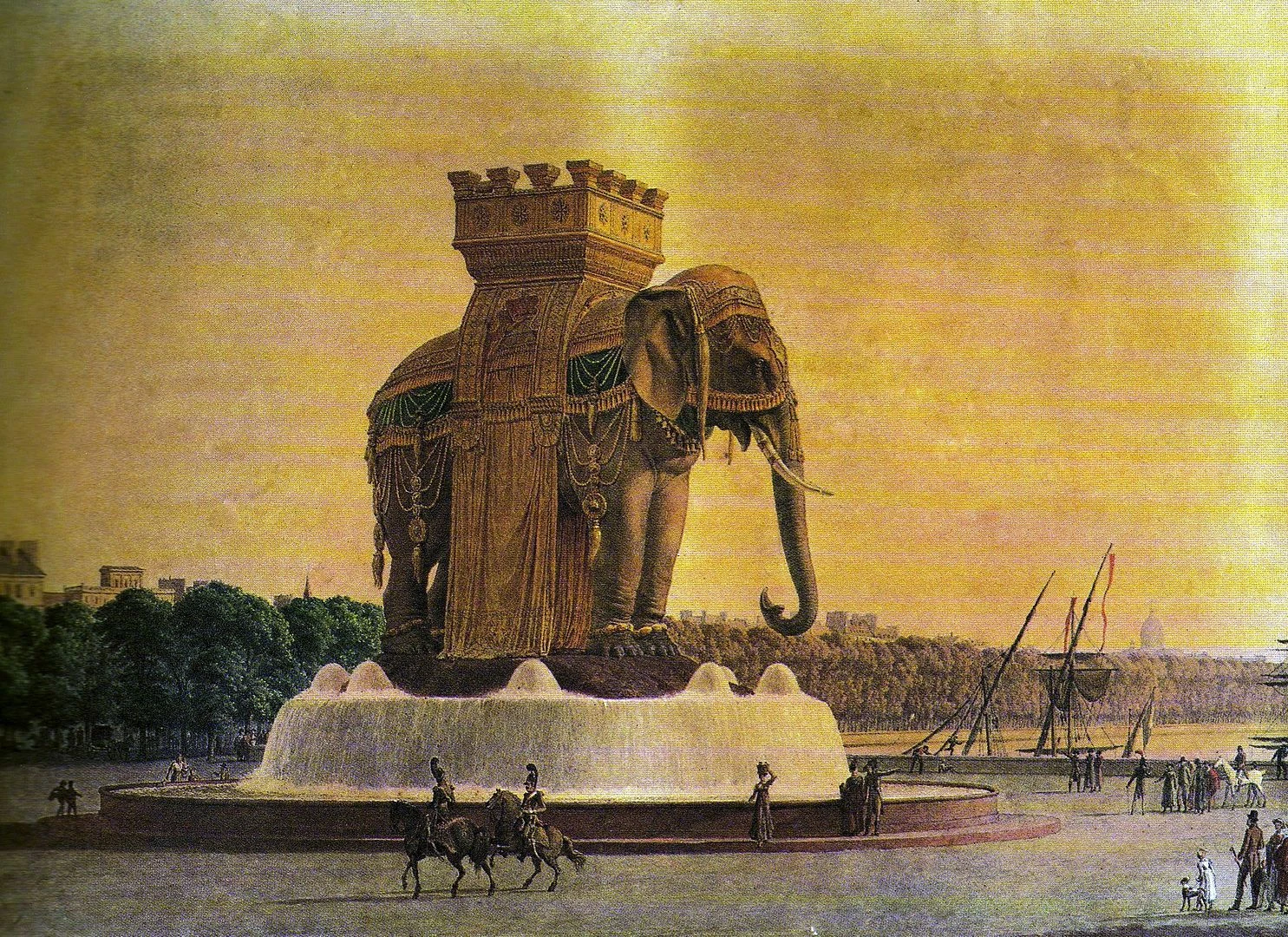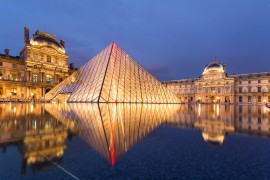Summary of the article
This article recounts the astonishing project of a giant elephant designed for Paris in the early 19th century. You will discover who was behind it, where it was to be installed, why it never saw the light of day, and what it reveals about the monumental ambitions of the time. A dive into a little-known episode in Parisian history, between imperial dreams and urban reality.
An elephant at the top of the Champs-Élysées
The Champs-Élysées: fields for a very long time...
In the 18th century, the Champs-Élysées resembled more of a country walk than an urban avenue. It was located outside of Paris. It wasn't necessarily a well-frequented place, with small open-air cafés, quite a few prostitutes, and it wasn't always safe to walk there in the evening. In the 18th century, the ancestor of amusement parks was discovered: the Colosseum. A place where people went to see shows, explore fake ruins, but also fireworks and even water shows. Disneyland didn't invent anything new... In short, a fairly unfrequented place that ends in a kind of hill. And this place inspires architects.
Map of the Champs-Elysées in the 18th century / Photo selected by monsieurdefrance.com: By Roussel, Mbzt — Plan de Roussel, CC BY 4.0, https://commons.wikimedia.org/w/index.php?curid=164137845
A monumental project born under Napoleon
Ribard de Chamoust's project with interior design / Photo selected by Monsieur de France: By Original uploaded by Nunh-huh on English Wikipedia. — Transferred from en.wikipedia to Commons., Public domain, https://commons.wikimedia.org/w/index.php?curid=1649991
In 1758, architect Charles Ribart de Chamoust came up with a bold project: a monumental elephant that visitors could enter through its belly. It must be said that the era was fascinated by faraway lands. People loved China, Turkey... And an elephant is emblematic of these dreamlike countries. So it was an elephant, but not just a sculpture. Inside, several rooms welcomed visitors, and at the very top, where the mahout would sit, a room offered a breathtaking view of Paris. The trunk was even designed to spout water from a gigantic fountain. It was a slightly crazy idea. But the project was rejected at Versailles and quickly abandoned.
Napoleon revives the idea of a giant elephant at the Bastille
Nearly 50 years later, Napoleon Bonaparte revived the idea. This time, he was not targeting the Champs-Élysées, as he had already begun his triumphal arch project, but rather the Place de la Bastille, freed from its former fortress, which had been razed after July 14, 1789. The project was entrusted to Cellerier, then to Jean-Jacques Alavoine, who designed a 24-meter-high elephant. A life-size plaster model was cast so that Parisians could visualize the future monument. A museum dedicated to Napoleon was to be installed inside.
A giant elephant never built
With the fall of the Empire, needless to say, there was no question of a Napoleon museum, so work on the site was halted. However, the plaster model remained in place on the Place de la Bastille and became a tourist attraction for three decades. The idea of moving it to the Barrière du Trône was briefly considered, but was ultimately abandoned. Badly damaged by time and becoming a nest for rats, the plaster elephant was destroyed in 1846.
Today, no one talks about building a monumental elephant in Paris anymore, but in the age of Jeff Koons' giant lobsters, who knows if the idea won't be revived one day?
Alavoine's project / Photo selected by monsieurdefrance.com: By Unknown Author — Paris, Prisma einer Stadt, Zurich 1978, Public domain, https://commons.wikimedia.org/w/index.php?curid=5286498
If you would like to learn more about the Arc de Triomphe, click here.
FAQ
Why did they want to build a giant elephant in Paris?
Napoleon wanted to erect a giant elephant in Paris to symbolize the power and stability of his Empire. The elephant, perceived as a strong and wise animal, was intended to impress the people and remind them of imperial grandeur through a spectacular monument visible in the Parisian urban landscape.
Did the elephant on the Champs-Élysées really exist?
No, the giant elephant on the Champs-Élysées was never built. The project remained at the planning stage and a political intention. Unlike the elephant at the Bastille, for which a model was made, the one planned for the Champs-Élysées never came to fruition.
Who came up with the idea of the giant elephant on the Champs-Élysées?
The idea of the giant elephant is attributed to the imperial power under Napoleon Bonaparte. It is part of a series of monumental projects designed to mark Paris with powerful symbols, combining political propaganda, urban planning, and ancient inspiration.
Where was the giant elephant supposed to be installed in Paris?
The giant elephant was to be installed near Place de l'Étoile, close to the Champs-Élysées. This strategic location provided maximum visibility from the major avenues and fitted in with a monumental vision of western Paris.
Why was the elephant project never carried out?
The project was abandoned due to Napoleon's fall, financial difficulties, and political changes. As the regime's priorities shifted, the giant elephant was relegated to the status of an unfeasible project.
Are there still traces of this project today?
No physical trace remains of the giant elephant of the Champs-Élysées. However, this project is regularly mentioned in archives and historical accounts as a striking example of the monumental ambitions of imperial Paris.
An article by Jérôme Prod’homme for Monsieur de France, written with passion and pleasure to describe France, tourism, and gastronomy.






